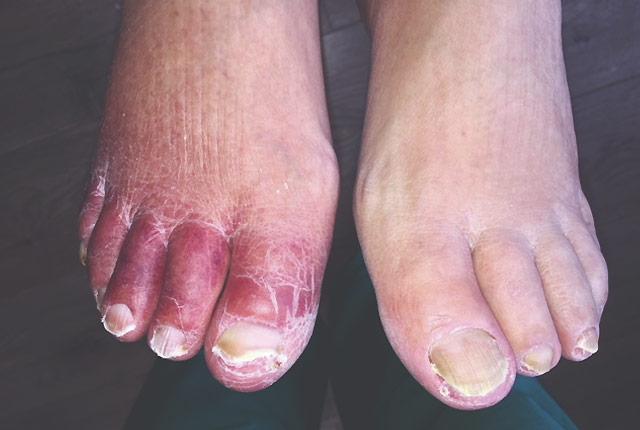
End-of-life care is aggressive for amputees on dialysis
Study findings indicate unmet palliative-care needs among subset of end-stage kidney-disease patients.Media Contact: Brian Donohue - 206.543.7856, bdonohue@uw.edu

Nearly one in 10 patients with end-stage kidney failure undergoes toe, foot, or leg amputation in their last year of life. During this time, these patients have prolonged stays in healthcare settings and limited access to hospice services. The findings, published Feb. 19, 2019, in the Journal of the American Society of Nephrology, indicate unmet palliative care needs of these patients.
Lower-extremity amputation predicts such a poor prognosis for end-stage renal disease (ESRD) patients that experts say that it should prompt clinicians to talk with these patients about their wishes for end-of-life care. Few studies to date have described how commonly these patients undergo amputation during the last year of life or other aspects of care they receive.
Catherine Butler, a nephrology fellow at the University of Washington School of Medicine, and colleagues studied a group of Medicare beneficiaries who died between 2002 and 2014. Their analysis included 62,075 beneficiaries with ESRD who did and 692,702 who did not undergo one or more lower-extremity amputation in the last year of life, as well as 8,937 beneficiaries without ESRD who did and 949,475 who did not undergo lower-extremity amputation.
Main findings:
- 8 percent of beneficiaries with ESRD underwent at least one such amputation in the last year of life, compared with 1 percent of beneficiaries who did not have ESRD.
- Among patients with ESRD, those who had undergone lower-extremity amputation were substantially more likely than those who had not to have spent prolonged periods of time in hospitals and nursing homes in their last year of life. They were also more likely to have died in the hospital and to have discontinued dialysis treatments before death – despite spending less time in hospice than other patients with ESRD.
“This study suggests that end-of-life care for these patients may not align with the kind of care that many seriously ill patients say they prefer – that is, to die at home and focus on comfort rather than prolonging life,” Butler said. “More work is needed to learn about the experiences of these seriously ill patients with ESRD who undergo amputation, and to identify opportunities to improve their care.”
In an accompanying essay, Erica Perry, a social worker in nephrology at the University of Michigan, and colleagues noted that some nephrologists don’t feel comfortable discussing end-of-life options with ESRD patients.
“By not openly discussing prognosis when complications mount and quality of life declines, we consign patients to more time in the emergency room, hospital, and ICU. Too often, the result is unnecessary pain and suffering, with death in the hospital rather than a place of the patient’s choosing,” they wrote. “Our own experience as a renal team suggests that discussing goals and prognosis early in the course of illness fosters ongoing relationships and trust, empowers more informed decisions, and promotes closure at the end of life for patients, families and their renal team as well.”
For details about UW Medicine, please visit https://uwmedicine.org/about.